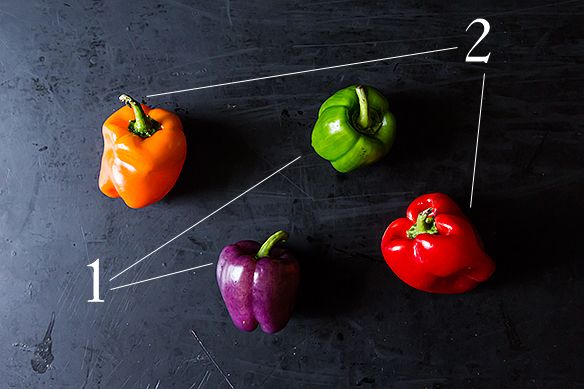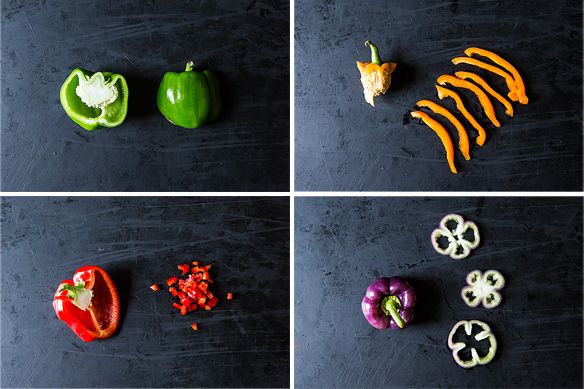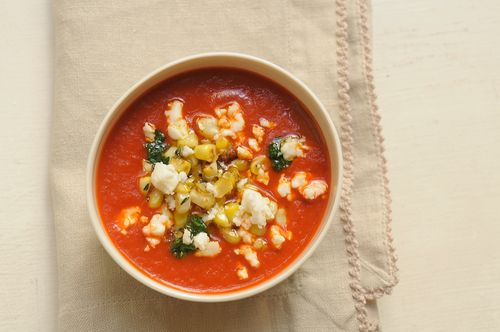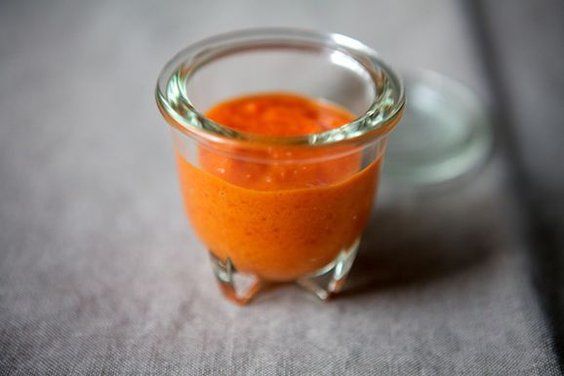Every week we get Down & Dirty, in which Nozlee Samadzadeh breaks down our favorite seasonal fruits, vegetables, and more by the numbers.
Recently, we learned all about hot peppers. Today we turn to their mild-mannered cousin, the bell pepper. Crunchy when raw, meltingly sweet when roasted, bell peppers come in a rainbow of colors. And unlike other peppers, which vary in heat depending on factors ranging from their species to the weather, you'll never find a hot bell pepper: due to a recessive gene, they don't produce capsaicin, the chemical that causes spiciness.

1. You have to start somewhere, and most bell peppers start green. That's right, green bell peppers are actually underripe! Underripe bell peppers can also be purple and white, depending on the variety (although you'll only find these colors at your local farmers' market). At this stage, the peppers have reached their final size, but their watery crunch still has a bitter edge to it -- the New York Times describes it as "a concentrated grassy flavor that’s close to asparagus".
2. Once the pepper has reached peak size, its chlorophyll starts to break down, the starches convert to sugars, and the pepper's color starts to change. Fully mature peppers are either red, orange, or yellow -- the red peppers are the sweetest.
A note on roasting: you can roast any pepper -- stuffed and roasted green bell peppers are a favorite -- but mature peppers, with their sugars fully developed, are the best candidates. A roasted or broiled red, yellow, or orange pepper becomes smoky and gains a more complex flavor, perfect for everything from soups to paella.

How can you cut a bell pepper? Let us count the ways! Halving works for stuffed peppers as well as roasting them, strips are best for a slow saute whether your end goal is an Italian-style sausage and pepper sandwich or Massa de Pimentao (the slice of skin will maintain the bell pepper's shape while the inner edge softens and caramelizes), a dice is preferable for salads where you want uniformly-sized ingredients, and big rings are ideal for sandwiches.
What's your favorite way to use a bell pepper?



Photos by James Ransom
I'm Nozlee Samadzadeh, a writer, editor, farmer, developer, and passionate home cook. Growing up Iranian in Oklahoma, working on a small-scale organic farm, and cooking on a budget all influence the way I cook -- herbed rice dishes, chicken fried steak, heirloom tomato salad, and simple poached eggs all make appearances on my bright blue kitchen table. I love to eat kimchi (homemade!) straight from the jar and I eat cake for breakfast.






See what other Food52 readers are saying.